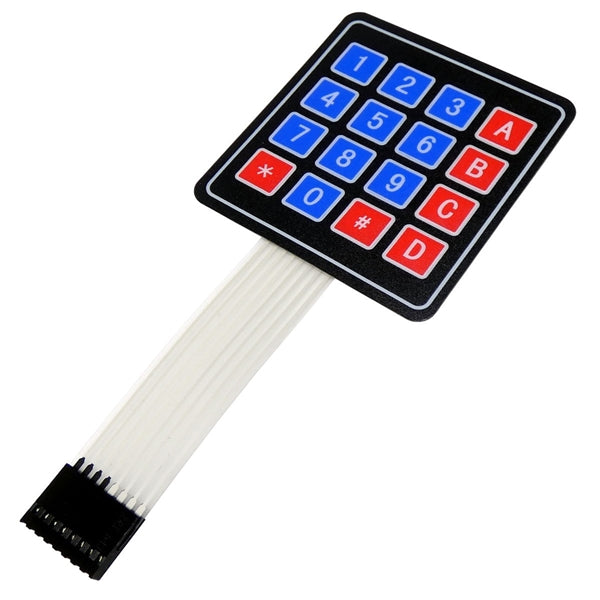Innovative Membrane Switch Solutions for Customized Control Panels
Innovative Membrane Switch Solutions for Customized Control Panels
Blog Article
Recognizing Membrane Switches Over: The Key to Trusted and sturdy Controls

What Are Membrane Layer Buttons?
Membrane switches are an advanced service in the world of individual interface technology, combining functionality and style seamlessly. These gadgets work as a user interface between users and electronic systems, incorporating several components into a portable style. Generally created from flexible, slim layers of products, membrane switches are made to react to touch, allowing users to communicate with machinery and digital devices properly.
The key components of a membrane layer button consist of a published circuit layer, graphic overlay, and a spacer layer that stops unintended activation. The graphic overlay can be customized to reflect brand identity or user choices, improving aesthetics while making certain usability. Membrane buttons are frequently used in numerous applications, consisting of medical tools, customer electronics, and commercial tools, owing to their durability and resistance to environmental aspects such as wetness and dust.
Among the crucial advantages of membrane buttons is their capacity to stand up to deterioration, making them excellent for high-traffic atmospheres. Additionally, they are lightweight and call for very little space, enabling innovative layouts in product development. Generally, membrane switches over stand for a efficient and useful option for contemporary digital interfaces, weding innovation with user-centric layout principles.
Exactly How Membrane Switches Job
The operation of membrane layer switches over joints on a simple yet reliable mechanism that translates individual input right into digital signals. When a customer presses the button, the leading layer deforms, permitting a conductive component in the circuit layer to make contact with a corresponding conductive pad on the bottom of the visuals overlay.
The style of membrane layer buttons can differ, however they frequently incorporate domes or tactile aspects to provide responses to the individual, enhancing the overall experience - membrane switch. The materials utilized in membrane buttons, such as polyester or polycarbonate, add to their durability and resistance to ecological variables, including wetness and dust. The published circuits are normally encapsulated, which protects them from wear and tear over time.
Benefits of Membrane Layer Switches

Furthermore, membrane layer switches are understood for their sturdiness. Built from durable materials, they are immune to dirt, dampness, and physical wear, which significantly extends their life expectancy contrasted to standard mechanical buttons. This resilience makes them especially appropriate for high-traffic environments and applications needing long life.
An additional significant benefit is the convenience of cleaning and upkeep. The smooth surface of membrane layer switches lessens dust build-up and is frequently unsusceptible spills, making them ideal for setups that need constant sanitization.
Furthermore, membrane buttons supply a streamlined account, leading to a thinner style that can be incorporated into various gadgets without including bulk. This function not just enhances the aesthetic appeal yet also adds to a much more ergonomic product style.
Applications of Membrane Layer Buttons
Easy to use and flexible, membrane layer switches discover applications across a vast array of markets, including medical devices, consumer electronic devices, and industrial devices. In the medical area, these buttons are essential to devices such as diagnostic equipment, individual tracking systems, and mixture pumps, where reliability and convenience of cleansing are essential. Their ability to keep and stand up to extreme atmospheres performance continue reading this makes them ideal for such applications.

In consumer electronic devices, membrane buttons are used in items like microwaves, washing devices, and push-button controls - membrane switch. Their sleek style enables for instinctive interface, enhancing the general user experience while supplying sturdiness and resistance to deterioration
Industrial tools additionally takes advantage of membrane buttons, especially in control panels for machinery and automation systems. These switches offer protection versus dirt and wetness, making certain regular efficiency in difficult settings. In addition, their personalized features allow producers to tailor them to details operational requirements, boosting performance and performance.
Picking the Right Membrane Layer Switch Over
When selecting a membrane button, it is vital to why not find out more think about different aspects that influence performance and viability for certain applications. The main factors to consider consist of environmental conditions, tactile comments, sturdiness, and layout requirements.
First, assess the operating setting; buttons subjected to moisture, chemicals, or extreme temperature levels need specific products to make certain longevity and capability. Next off, evaluate the need for responsive responses. Depending on user communication, some applications may take advantage of a tactile reaction to confirm activation, while others may favor a non-tactile style for aesthetic factors.
Toughness is one more important factor; membrane switches should be designed to hold up against frequent use, influences, and abrasion. Guarantee the chosen switch can withstand the expected lifecycle, specifically in high-usage scenarios.

Verdict
In conclusion, membrane changes function as vital elements in the layout of trustworthy and long lasting control systems throughout various markets. Their portable layout, combined with durable construction and customizable features, boosts individual communication while guaranteeing long life sought after atmospheres. The convenience of membrane layer changes permits tailored services that fulfill certain functional requirements, enhancing their value in modern-day innovation. As industries continue to advance, the importance of integrating reliable membrane layer button options can not be overemphasized.
Membrane switches stand for a crucial facet of modern-day user interface layout, mixing performance with strength in different applications.Membrane buttons are an innovative remedy in the world of user interface modern technology, incorporating performance and style effortlessly. Usually constructed from flexible, thin layers of materials, membrane layer switches are made to respond to touch, making it possible for customers to engage with equipment and electronic devices successfully.
The style of membrane buttons can vary, however they usually incorporate domes or responsive components to offer my sources feedback to the customer, enhancing the overall experience.In verdict, membrane changes offer as important components in the design of long lasting and trusted control systems across numerous markets.
Report this page